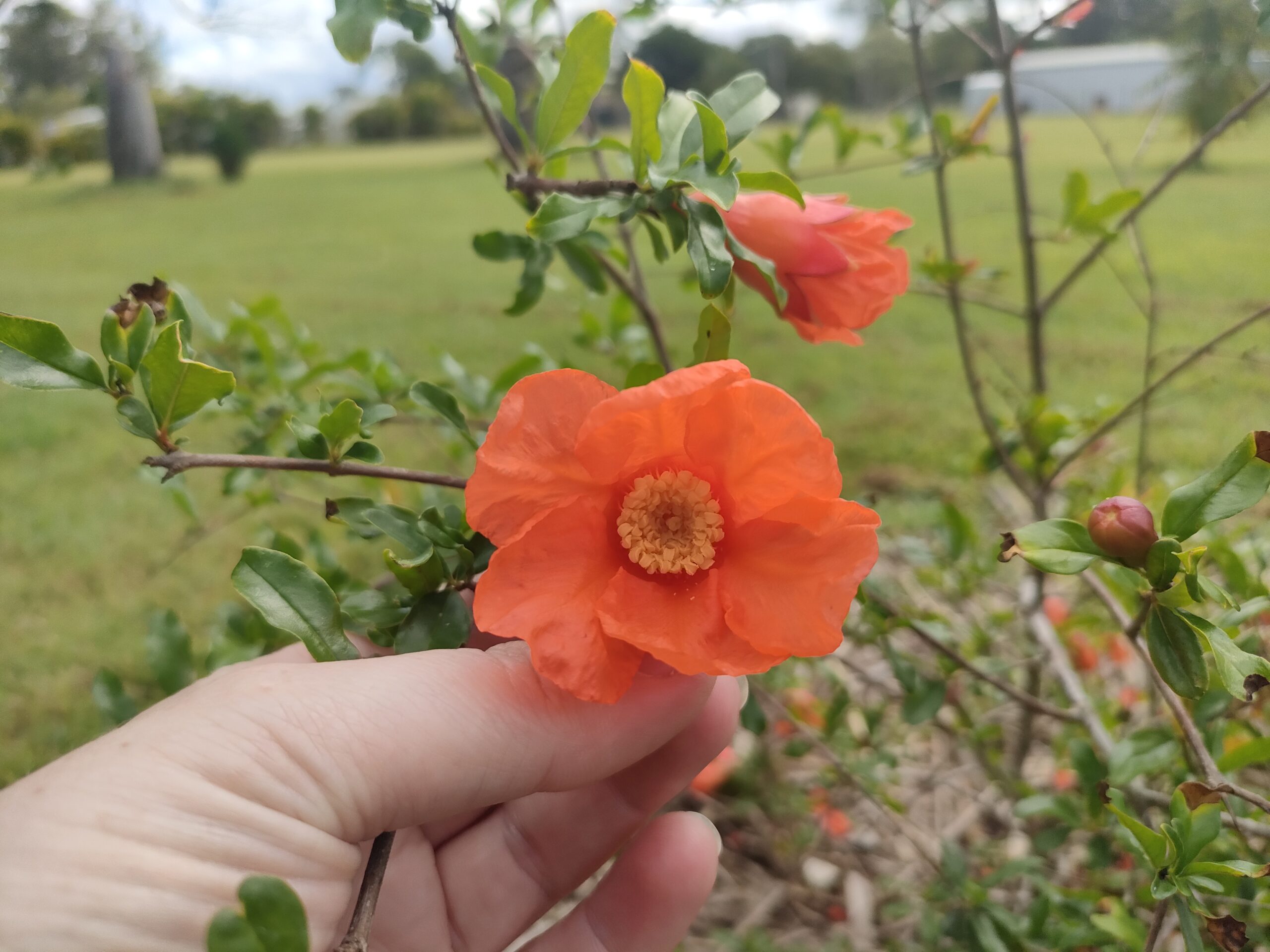For over a year and a half, my poor pomegranate tree sat neglected in a pot—no flowers, no fruit, and definitely no joy. It was pot-bound, ant-ridden, and silently screaming for help. Honestly, I thought it was a goner.
But I decided to give it one last chance.
What followed turned into a full-on pomegranate rescue mission, and I’m so excited to share the exact steps I took to bring this tree back from the brink. Spoiler alert: it’s now covered in flowers!
If you’re trying to grow pomegranates—especially in pots—this story might just save your tree too.
🎥 Watch the full transformation in this video:
https://youtu.be/QI9Rkk9-ft0
Why My Pomegranate Tree Was Struggling
When we first got the tree, I popped it into a pot with the best intentions. I figured it would be happy enough until I found the right spot to plant it.
Fast forward 18 months, and… not a single fruit. Just tired, yellowing leaves and roots circling desperately inside the pot. Yes, pomegranates can grow in pots, but they don’t always thrive in them—especially here in our hot, subtropical Queensland climate.
It was time for a proper rescue.

The Rescue Plan: Time to Get Dirty
Step one was finding the perfect planting spot—somewhere with 6 to 8 hours of direct sunlight and decent drainage. Our soil is heavy clay, which doesn’t drain well, but I wasn’t going to let that stop me.
Here’s what I used to supercharge the planting hole:
- Mushroom compost (for organic nutrients)
- Aged cow manure (to enrich the clay)
- A sprinkle of root booster
- Worm tea from our worm farm (as a natural fertiliser)




I made sure to mix it all together so the roots wouldn’t come into direct contact with the manure and burn. Then, I gently removed the tree from its pot—and wow, it was seriously pot-bound. Long, circling roots and even some ants living in the soil. 😬
But the good news? The roots weren’t rotting—just desperate for freedom.



The Secret Ingredient: Worm Tea 🌱
Instead of a commercial seaweed solution, I used a diluted dose of worm tea—also known as worm wee or worm juice—straight from our worm farm. It’s full of beneficial microbes and gentle nutrients that help reduce transplant shock and encourage root growth.
This homemade tonic was the final touch before a deep watering (about 9L), and then I finished off with a thick layer of sugarcane mulch straight from a local farm. This helps retain moisture, suppress weeds, and stop our clay soil from drying out and turning rock hard in the heat.

Tips for Growing Pomegranates Successfully
Whether you’re growing them in pots or planting them out, here’s what I’ve learned:
- ✅ Full sun is a must—6 to 8 hours daily
- ✅ Improve clay soil with compost and organic matter
- ✅ Water deeply but not too frequently—especially during dry spells
- ✅ Mulch generously to protect the soil
- ✅ Use worm tea or seaweed solution to reduce transplant shock
Final Thoughts: Don’t Give Up on Your Tree
Sometimes, all a struggling plant needs is a second chance and the right environment to thrive. This little tree reminded me how resilient nature can be with a bit of help. I can’t wait to see if these flowers turn into juicy, homegrown pomegranates!
🎥 Want to watch the full rescue step-by-step? Click here to watch the video:
Have you ever rescued a plant that looked beyond saving? Let me know in the comments—I’d love to hear your story!
And if you’re passionate about fruit trees, backyard gardening, and growing your own food, don’t forget to subscribe to our YouTube channel and follow along here at Country Living From Scratch.

Leave a Reply